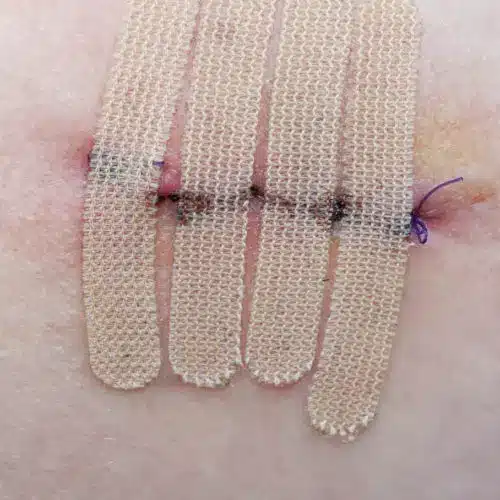
FIELD THERAPIES FOR PRECANCERS
I recently posted about treatment options for precancers and mentioned “field therapies,” including fluorouracil cream, photodynamic therapy, and chemical peels. We call these field therapies because they are addressing sun-damaged areas or “fields” rather than spot treating individual precancers. Let’s go into a little more detail about each of these options.
FLUOROURACIL CREAM
This is a cream (also comes in a solution for hairy areas like the scalp) that targets precancers. This sophisticated medication works by blocking the DNA synthesis of new cells. The reason it targets precancers is because these cells are dividing more rapidly due to sun-damage-related mutations. Thus, it preferentially targets precancers over normal skin. It causes precancers to become inflamed and scabbed and, as part of that inflammation, your immune system actually gets rid of them. Pretty neat stuff! This cream is highly effective but the downside is that it’s not terribly comfortable to walk around with scabs all over your face! I often have my patients modify the regimen in one of the following ways:
- Use it on smaller segments of the sun-damaged area. For example, rather than treating the entire face at one time, you can treat the forehead, nose, cheeks, and ears one at a time as individual segments.
- Use it as a spot treatment. I usually do this only for patients with mild to moderate sun damage, but it’s a very tolerable option. For those with more severe sun damage, I usually recommend more a more aggressive approach to more actively prevent skin cancer.
- Break up the treatment. For example, rather than using it for three straight weeks, I’ll often have my patients use it for 3 non-consecutive weeks, allowing their skin some time to heal in between phases. Less effective than consecutive weeks, but more tolerable and likely leads to better compliance in the long run.
- Have fluorouracil compounded with a second ingredient known as calcipotriene. This combination is highly synergistic and appears to yield superior results in less time.
PHOTODYNAMIC THERAPY For Precancers
Another sophisticated treatment. I’m constantly impressed with the ingenuity and brilliance of the smart people who discover these things! This treatment is performed in-office. I apply a “sensitizer” to the area and then we allow it to soak into your skin for anywhere from 30 minutes to 2 hours, depending on the area we are treating. You then sit under a red or blue light that activates the sensitizer, which then releases free radicals that damage the precancers. The up-sides are that most patients do very well with this treatment and, for some, it is more convenient to do an in-office treatment than remember to use a cream at home. The down-sides are that some patients feel like they have a sunburn afterward and you have to stay out of the sun for a couple of days since the sensitizer makes you more likely to sunburn even if not in direct sunlight.
CHEMICAL PEELS
Superficial chemicals peels won’t get deep enough. It has to be what we call a “medium-depth” peel. The goal is to cause the entire epidermis to peel, so YOU WILL LIKELY PEEL LIKE A SNAKE FOR AT LEAST A WEEK. This option is not for the faint of heart. I use trichloroacetic (TCA) acid and it stings a lot for 5-10 minutes. That said, by the time you leave the office, there should be no pain or discomfort. This is a great option for those who want to kill two birds with one stone, specifically those who want to both get rid of precancers as well as improve the appearance of fine lines and wrinkles, and hyperpigmentation.
If you have a lot of sun damage, talk to your board-certified dermatologist to see if any of these options would be appropriate for you.

